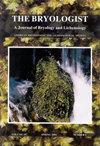不同年龄森林中苔藓、叶苔草和叶状苔草的遗传多样性和繁殖性能差异
IF 1.5
4区 生物学
Q4 PLANT SCIENCES
引用次数: 1
摘要
摘要关于高度分散的克隆植物(如苔藓植物)的两个相互竞争的预测预计,在为定殖打开栖息地的干扰之后,遗传多样性水平会随着时间的推移而增加或减少。此前的研究发现,相对未受干扰的森林地区的苔藓植物具有更高水平的遗传变异,在此基础上,我们对美国东南部山区、皮埃蒙特和海岸平原的苔藓(Plagionium cilare)、多叶苔草(Porella platyphylloidea)和叶状苔草(Conocephalum conicum sensu lato)的单性单倍体物种进行了研究。从上次扰动以来的时间来看,这些地点的排名为山脉>皮埃蒙特>海岸平原。遗传变异的测量,包括多态位点的百分比、每个位点的平均等位基因数、平均预期杂合度和多位点基因型的数量,都符合遗传多样性应该随着时间的推移而增加的预测。我们还研究了生殖成功的几个组成部分,这些组成部分预计会影响遗传变异水平,包括菌落大小、菌落混合、性别表达、表型性别比和孢子体产量(产生孢子体的雌性百分比)。尽管与土壤、气候和植被有关的其他生态差异也可能影响生殖成功,但我们对自上次扰动以来不同时间种群的大部分(但不是全部)预测都得到了实现。本文章由计算机程序翻译,如有差异,请以英文原文为准。
Differences in genetic diversity and reproductive performance of a moss, a leafy liverwort, and a thalloid liverwort from forests of contrasting ages
Abstract. Two competing predictions regarding highly dispersible clonal plants, such as bryophytes, expect levels of genetic diversity to either increase or decrease over time following a disturbance that opens habitat for colonization. Following up on previous research that found higher levels of genetic variation in bryophytes from relatively undisturbed forest sites, we examined unisexual, haploid species of a moss (Plagiomnium ciliare), a leafy liverwort (Porella platyphylloidea), and a thalloid liverwort (Conocephalum conicum sensu lato) from the Mountains, Piedmont, and Coastal Plain of the southeastern United States. In terms of time since last disturbance, sites were ranked Mountains > Piedmont > Coastal Plain. Measures of genetic variation, including percentage of loci polymorphic, mean number of alleles per locus, mean expected heterozygosity, and number of multilocus genotypes, all fit the prediction that genetic diversity should increase over time. We also examined several components of reproductive success expected to influence levels of genetic variation, including colony size, colony mixing, sex expression, phenotypic sex ratio, and sporophyte production (percentage of females producing sporophytes). Most, but not all, of our predictions for populations of varying time since last disturbance were fulfilled, although other ecological differences related to soil, climate, and vegetation are also likely to influence reproductive success.
求助全文
通过发布文献求助,成功后即可免费获取论文全文。
去求助
来源期刊

Bryologist
生物-植物科学
CiteScore
2.40
自引率
11.10%
发文量
40
审稿时长
>12 weeks
期刊介绍:
The Bryologist is an international journal devoted to all aspects of bryology and lichenology, and we welcome reviews, research papers and short communications from all members of American Bryological and Lichenological Society (ABLS). We also publish lists of current literature, book reviews and news items about members and event. All back issues of the journal are maintained electronically. The first issue of The Bryologist was published in 1898, with the formation of the Society.
Author instructions are available from the journal website and the manuscript submission site, each of which is listed at the ABLS.org website.
All submissions to the journal are subject to at least two peer reviews, and both the reviews and the identities of reviewers are treated confidentially. Reviewers are asked to acknowledge possible conflicts of interest and to provide strictly objective assessments of the suitability and scholarly merit of the submissions under review.
 求助内容:
求助内容: 应助结果提醒方式:
应助结果提醒方式:


